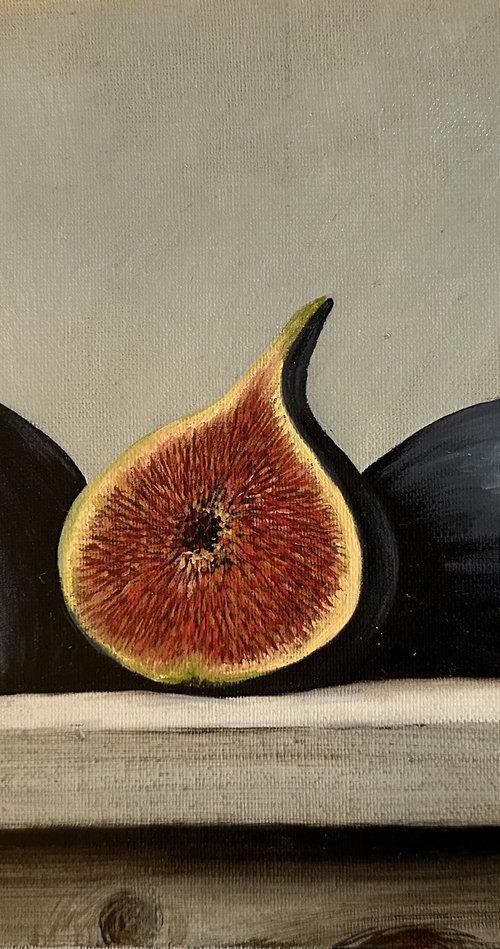Inspiring Interior Decor Tips with Oil Paintings for Sale
Inspiring Interior Decor Tips with Oil Paintings for Sale
Blog Article
Discovering Everything About Oil Paints: An Overview to Comprehending Their Charm and Value
Oil paintings have captivated audiences for centuries, providing a glimpse right into the creative proficiency of various eras. Their abundant background is linked with cutting-edge techniques and extensive psychological expression. Comprehending the products and methods behind these art work can enhance gratitude. In addition, the market for oil paints provides opportunities for enthusiasts and investors alike. As one explores this remarkable world, the question emerges: what makes an oil painting really useful?
The History of Oil Paint: A Journey Through Time
Although oil paint has roots that go back to ancient times, it truly thrived during the Renaissance, when musicians discovered its adaptability and rich shade capacity. Early instances can be mapped to the 7th century, with techniques evolving significantly throughout societies. The tool ended up being famous in Northern Europe in the 15th century, specifically with the jobs of artists like Jan van Eyck, that spearheaded its use for in-depth realism and dynamic shades. This duration noted a departure from tempera paints, enabling better deepness and texture. As oil paint spread, it influenced numerous artists, leading to work of arts by prominent figures such as Leonardo da Vinci and Rembrandt. The medium's heritage continues, shaping the art world well into contemporary times.
Recognizing Oil Paints: Products and Techniques
As musicians check out the globe of oil paints, they experience a varied array of materials and techniques that define this tool. The key parts of oil paint consist of pigments, which offer shade, and drying out oils, such as linseed, that bind the pigments and promote application. Numerous ingredients can change the paint's structure and drying time, enhancing adaptability. Strategies like glazing, where clear layers are constructed up, and impasto, which entails using thick paint, enable various aesthetic impacts. In addition, using brushes, scheme blades, and also fingers can create special textures and finishes. Comprehending these products and methods makes it possible for musicians to fully express their creativity and achieve the wanted influence in their art work.
The Function of Color in Oil Paintings
Color plays a pivotal duty in oil paintings, affecting both visual allure and psychological resonance. Recognizing color concept fundamentals, consisting of the connections between hues, can improve an artist's capacity to communicate mood and atmosphere. In addition, understanding color blending methods enables higher depth and splendor in a painting's combination.

Color Concept Fundamentals
Understanding shade concept is important for musicians collaborating with oil paints, as it develops the foundation for creating unified and aesthetically appealing make-ups. Color concept encompasses the study of just how colors interact, the shade wheel, and the relationships in between primary, second, and tertiary colors. Musicians utilize complementary colors to boost contrasts and produce centerpieces, while comparable colors advertise unity and cohesiveness within a piece. In addition, the ideas of awesome and warm colors influence the perception of deepness and area in a paint. Realizing these principles enables artists to manipulate shade effectively, assisting the viewer's eye and interacting their desired message. Mastery of color concept ultimately enhances a musician's capacity to communicate feelings and concepts via their work.
Psychological Influence of Shade
The emotional effect of shade in oil paints plays an important duty in just how audiences connect and perceive with artwork. Colors stimulate details sensations and moods, affecting the visitor's emotion. For example, warm colors like oranges and reds can develop a sense of warmth and power, while cool tones such as blues and greens typically stimulate calmness or self-contemplation. Artists strategically select color combinations to boost narrative components, guiding the audience's emotional journey. The saturation and comparison of colors even more enhance these impacts, attracting interest and developing focus. Inevitably, the interaction of shades in oil paints not just enhances their aesthetic charm but also functions as a powerful medium for emotional expression, enriching the customer's experience and analysis.
Shade Mixing Techniques
While lots of elements of oil painting add to the general composition, understanding color blending strategies is important for attaining wanted results and deepness. Color blending can be approached through numerous techniques, including the additive and subtractive processes. Additive mixing involves combining shades of light, while subtractive mixing depends on pigments, where colors mix to produce new tones. Musicians usually use a minimal palette to develop harmonious jobs, recognizing the connections between primary, second, and tertiary shades. Techniques such as glazing and scumbling further boost depth and luminosity. By masterfully blending colors, a musician can evoke emotions, develop centerpieces, and achieve a feeling of realistic look, inevitably raising the painting's emotional and aesthetic influence.
Famous Oil Painters and Their Iconic Works

Famed for their mastery of shade and method, oil painters have actually created a few of one of the most well known artworks in background. Renowned artists like Vincent van Gogh mesmerized target markets with his stirring brushwork in "Starry Night," while Claude Monet's "Impression, Daybreak" prepared for Impressionism. Leonardo da Vinci's "Mona Lisa" continues to be a long-lasting sign of creative brilliant, showcasing his skill in catching human expression. On the other hand, Rembrandt's "The Evening Watch" shows his ingenious use of light and shadow. Various other remarkable numbers consist of Pablo Picasso, who revolutionized modern art with his strong trial and error in works like "Les Demoiselles d'Avignon," and Georgia O'Keeffe, whose lively depictions of blossoms and landscapes assisted define American innovation. Each musician's distinct style added significantly to the oil painting landscape.
Exactly how to Assess the Top Quality of an Oil Paint
Reviewing the quality of an oil painting entails a mindful analysis of craftsmanship techniques, as well as an analysis of shade and make-up. Observing brushwork, layering, and the application of paint can disclose the musician's skill level. Additionally, the interaction of shades and the general plan of elements add significantly to the painting's aesthetic value.
Evaluating Workmanship Techniques
A careful evaluation of workmanship techniques is necessary for figuring out the high quality of an oil painting. Evaluators should initially examine the application of paint; thick, distinctive brushstrokes may recommend a skilled hand, while extremely consistent applications could suggest an absence of deepness. oil paintings for sale. The layering method is additionally important; the presence of glazes and varied density can enhance luminance and intricacy. Furthermore, the quality of the products used, such as the canvas and pigments, plays a substantial function in toughness and overall visual. Interest to information in components like edges and shifts in between shades mirrors the artist's commitment to their craft. Eventually, these strategies contribute to the painting's psychological influence and market price, acting as indications of the musician's ability and intent
Evaluating Color and Structure
While evaluating the quality of an oil painting, one have to concentrate on the interplay of color and composition, as these aspects are fundamental to the artwork's general impact. Color selections can establish and evoke emotions mood; for that reason, the musician's combination need to be examined for harmony and comparison. A well-balanced structure directs the visitor's eye and develops a feeling of unity. Artists frequently employ techniques like the rule of thirds or leading lines to improve visual interest. Additionally, making use of light and darkness can add deepness, boosting the three-dimensionality of the painting. Ultimately, an effective oil paint marries color and make-up, involving the viewer and inviting a much deeper appreciation of the musician's vision and strategy.
Taking care of and Preserving Oil Paintings
Appropriate treatment and preservation of oil paints is vital for maintaining their stability and longevity. To secure these art work, it is essential to display them far from direct sunlight, which can create fading and staining. Maintaining a secure environment with regulated temperature level and humidity further aids in avoiding damage. Cleaning need to be done delicately making use of a soft, dry towel, staying clear of any type of harsh chemicals that could hurt the paint or varnish. Routine evaluations for indications of degeneration, such as flaking or breaking, are recommended. When delivering or saving oil paintings, correct extra padding and framework are necessary to avoid physical damage. Eventually, diligent treatment adds to the aesthetic allure and worth of oil paints gradually.
The Market for Oil Paintings: Accumulating and Investing
Understanding the market characteristics for oil paintings is necessary for collectors and capitalists alike. The value of these art work is influenced by various aspects, consisting of the artist's reputation, historic significance, and present fads. Collection agencies typically seek items that resonate personally while considering potential admiration in worth. Galleries and public auctions offer as key places for trading, with prices fluctuating based on demand and rarity. Spending in oil paintings needs research right into the market, along with an understanding of oil paintings for sale credibility and provenance. In addition, arising musicians might provide chances for considerable returns, while established names can command high rates. Generally, a strategic method to gathering can produce both visual enjoyment and monetary benefits.

Frequently Asked Questions
What Are the Environmental Impacts of Oil Painting Products?
The environmental effects of oil painting products include the release of unstable organic compounds (VOCs), hazardous waste generation, and source removal for pigments. These aspects add to air pollution and ecological destruction, elevating problems among ecologically aware musicians and customers.
How Do Various Canvases Influence Oil Paint Outcomes?
Different canvases affect oil paint results significantly. Absorbency, texture, and surface area high quality can change paint application, drying times, and color vibrancy. Artists typically select particular canvases to achieve desired results and enhance their artistic expression.
Can Oil Paintings Be Restored if Harmed?
Oil paints can undoubtedly be brought back if damaged. Professional conservators utilize numerous methods to repair tears, clean surface areas, and address staining, making certain that the art work keeps its initial appeal and value for future generations.
What Are the Signs of an Initial Oil Paint?
The indications of an original oil paint include noticeable brush strokes, structure variations, and an irregular canvas weave (oil paintings for sale). Furthermore, credibility may be confirmed via provenance, signatures, and the visibility of a varnish layer distinct to oil tools
Exactly How Has Modern Technology Influenced Modern Oil Painting Techniques?
Technology has actually substantially affected modern-day oil painting techniques by presenting digital devices for preparation, enhanced products for structure and long life, and on-line systems for sharing and marketing art, thus increasing artists' imaginative possibilities and audience reach. Oil paint has origins that date back to ancient times, it really flourished during the Renaissance, when artists discovered its convenience and rich shade possibility. The psychological impact of color in oil paintings plays a vital role in how audiences attach and perceive with artwork. While lots of elements of oil painting add to the overall structure, grasping shade mixing methods is crucial for accomplishing wanted results and deepness. Assessing the high quality of an oil painting includes a cautious assessment of workmanship strategies, as well as an evaluation of color and make-up. While reviewing the high quality of an oil paint, one need to focus on the interaction of color and make-up, as these elements are fundamental to the art work's total effect.
Report this page